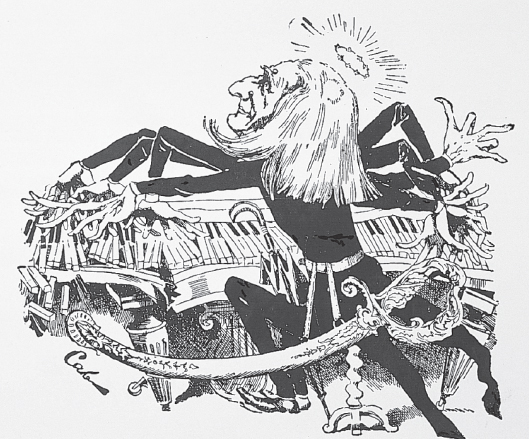Biography: Franz Liszt (1811–1886)

There are some important composers whose music we unfortunately have to pass over in this book because of space limits. In this box and the one on page 248, we give the biographies of three of them, together with some account of their roles in the history of Romantic music.
Franz Liszt learned music from his father on the Hungarian estate of the princes Esterházy, whom Haydn had once served. At age eleven, the boy gave his first piano concert in Vienna, where he met Beethoven. He later settled in Paris, home of another great émigré pianist-
Liszt’s dashing looks and personality and his liaisons with married noblewomen — Countess d’Agoult and, later, Princess Sayn-
After his relationship with d’Agoult came to a stormy end in 1839, Liszt spent a few years giving sensational concerts all over Europe. Tiring of concert life, he then took a position as conductor and director of the theater at Weimar, in Germany, where there was still a court that supported the arts in the old eighteenth-
Like many other Romantic composers, Liszt was a writer of note, as well as a musician. He was a strong advocate of the music of Richard Wagner; the two men learned much from each other. Both friend and foe linked Wagner’s “music dramas” with Liszt’s symphonic poems as “Music of the Future.” In his personality, however, Liszt was as magnanimous as Wagner was self-
Liszt really had two major careers. The first, at Paris, his career as a fantastic piano virtuoso, underpins a musical ideal that is still alive and well in music conservatories today. It left a mass of fiercely difficult piano music, including the Transcendental Études (the name says it all!) and the popular Hungarian Rhapsodies — important early products of nationalism in music (see page 282).
Liszt’s second career, at Weimar, focused on orchestral music: program symphonies and symphonic poems. We take up these genres on pages 249 and 279.